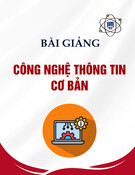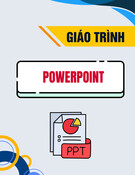
Silberschatz, Galvin and Gagne ©2013
Operating System Concepts – 9th Edition
Chapter 2: Operating-System
Structures

2.2 Silberschatz, Galvin and Gagne ©2013
Operating System Concepts – 9th Edition
Chapter 2: Operating-System Structures
Operating System Services
User Operating System Interface
System Calls
Types of System Calls
System Programs
Operating System Design and Implementation
Operating System Structure
Operating System Debugging
Operating System Generation
System Boot

2.3 Silberschatz, Galvin and Gagne ©2013
Operating System Concepts – 9th Edition
Objectives
To describe the services an operating system provides to
users, processes, and other systems
To discuss the various ways of structuring an operating
system
To explain how operating systems are installed and
customized and how they boot

2.4 Silberschatz, Galvin and Gagne ©2013
Operating System Concepts – 9th Edition
Operating System Services
Operating systems provide an environment for execution of programs
and services to programs and users
One set of operating-system services provides functions that are
helpful to the user:
User interface - Almost all operating systems have a user
interface (UI).
Varies between Command-Line (CLI), Graphics User
Interface (GUI), Batch
Program execution - The system must be able to load a program
into memory and to run that program, end execution, either
normally or abnormally (indicating(cho biết) error)
I/O operations - A running program may require I/O, which may
involve(gồm) a file or an I/O device

2.5 Silberschatz, Galvin and Gagne ©2013
Operating System Concepts – 9th Edition
Operating System Services (Cont.)
One set of operating-system services provides functions that are helpful to the
user (Cont.):
File-system manipulation - The file system is of particular(đ/biệt)
interest. Programs need to read and write files and directories, create
and delete them, search them, list file Information, permission
management.
Communications – Processes may exchange(trao đổi DL) information,
on the same computer or between computers over a network
Communications may be via shared memory or through message
passing (packets(gói tin) moved by the OS)
Error detection – OS needs to be constantly(l/luôn) aware(có kiến thức,
nhận thức) of possible errors
May occur in the CPU and memory hardware, in I/O devices, in user
program
For each type of error, OS should take the appropriate action to
ensure(đảm bảo) correct and consistent(nhất quán) computing
Debugging facilities(p/tiện) can greatly enhance(n/cao) the user’s and
programmer’s abilities(k/năng) to efficiently(h/quả) use the system

![Bài giảng Phần mềm mã nguồn mở [mới nhất]](https://cdn.tailieu.vn/images/document/thumbnail/2025/20250526/vihizuzen/135x160/6381748258082.jpg)


![Bài giảng Hệ điều hành: Trường Đại học Công nghệ Thông tin (UIT) [Mới nhất]](https://cdn.tailieu.vn/images/document/thumbnail/2025/20250515/hoatrongguong03/135x160/6631747304598.jpg)


![Bài giảng Hệ điều hành Lê Thị Nguyên An: Tổng hợp kiến thức [mới nhất]](https://cdn.tailieu.vn/images/document/thumbnail/2025/20250506/vinarutobi/135x160/8021746530027.jpg)





![Đề thi Excel: Tổng hợp [Năm] mới nhất, có đáp án, chuẩn nhất](https://cdn.tailieu.vn/images/document/thumbnail/2025/20251103/21139086@st.hcmuaf.edu.vn/135x160/61461762222060.jpg)


![Bài tập Tin học đại cương [kèm lời giải/ đáp án/ mới nhất]](https://cdn.tailieu.vn/images/document/thumbnail/2025/20251018/pobbniichan@gmail.com/135x160/16651760753844.jpg)
![Bài giảng Nhập môn Tin học và kỹ năng số [Mới nhất]](https://cdn.tailieu.vn/images/document/thumbnail/2025/20251003/thuhangvictory/135x160/33061759734261.jpg)
![Tài liệu ôn tập Lý thuyết và Thực hành môn Tin học [mới nhất/chuẩn nhất]](https://cdn.tailieu.vn/images/document/thumbnail/2025/20251001/kimphuong1001/135x160/49521759302088.jpg)


![Trắc nghiệm Tin học cơ sở: Tổng hợp bài tập và đáp án [mới nhất]](https://cdn.tailieu.vn/images/document/thumbnail/2025/20250919/kimphuong1001/135x160/59911758271235.jpg)


![Giáo trình Lý thuyết PowerPoint: Trung tâm Tin học MS [Chuẩn Nhất]](https://cdn.tailieu.vn/images/document/thumbnail/2025/20250911/hohoainhan_85/135x160/42601757648546.jpg)

